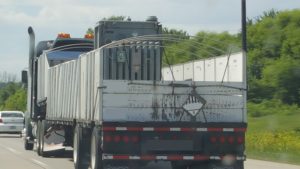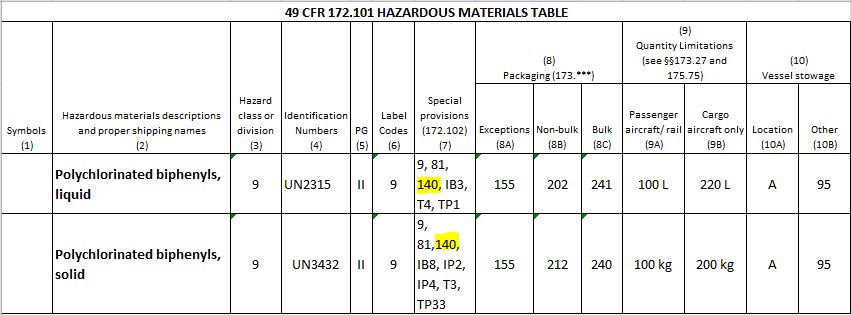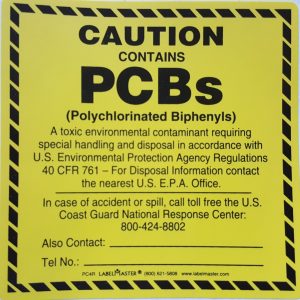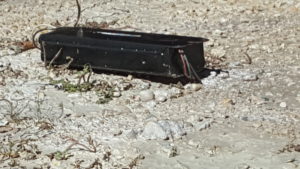Benjamin Franklin Pass, 60, and P&W Waste Oil Services Inc. of Wilmington, N.C., pleaded guilty today in federal court in the Eastern District of North Carolina for violations of the Toxic Substances Control Act, as well as for making false statements and failing to pay several years of taxes, announced the Department of Justice’s Environment and Natural Resources Division and the U.S. Attorney’s Office for the Eastern District of North Carolina. The defendants admitted to, among other things, the unlawful handling of a toxic substance that resulted in widespread contamination.
The P&W facility in Leland, N.C., included a tank farm consisting of multiple tanks ranging from 20,000 gallons to 500,000 gallons. The facility is located approximately 500 feet to the east of the Cape Fear River and a federally recognized wetland.As part of its business operations, P&W transported, processed and marketed
used oil contaminated with polychlorinated biphenyls (PCBs). P&W received the
used oil from small and large companies, such as automotive service stations, transformer repair companies and marinas. P&W also conducted tank cleaning and waste removal.According to the charges filed in federal court in Raleigh, N.C., and information stated in open court, the defendants knowingly failed to comply with regulations covering PCB-contaminated
used oil by unlawfully transporting, storing and disposing of
used oil contaminated with PCBs. Specifically, in July 2009, an employee transported waste oil containing fluid from five PCB transformers from a site in Wallace, S.C., to the P&W facility. The investigation revealed that the waste oil was contaminated with PCB concentrations in excess of 500 parts per million.
“Enforcing our environmental laws is essential to protecting the health of North Carolina’s residents and their natural resources,” said Robert G. Dreher, Acting Assistant Attorney General for the Justice Department’s Environment and Natural Resources Division. “PCBs are well known to pose substantial risks to human health and the environment and must be handled responsibly and lawfully. We will continue to vigorously prosecute those who ignore the laws Congress enacted in order to protect the people and the environment from coming into contact with this toxic substance.”
“This disregard of environmental protections resulted in significant contamination,” said U.S. Attorney for the Eastern District of North Carolina Thomas G. Walker. “The defendant’s conduct placed an economic burden on the United States and an unreasonable risk to the health and safety of the citizens of North Carolina.”
Despite knowledge of the investigation into the defendants’ illegal handling of PCB-contaminated used oil, Pass and an employee of P&W (at Pass’ direction) continued to unlawfully dilute the contaminated used oil. The mishandling of the PCB-contaminated used oil resulted in the wide-spread contamination at the site and other sites, resulting in millions of dollars in cleanup costs.
PCBs pose such an unreasonable risk of injury to human health and the environment that effective Jan. 1, 1978, Congress banned the production of PCBs and mandated that no person may distribute in commerce, or use any PCBs other than in a totally enclosed manner, and directed the U.S. Environmental Protection Agency (EPA) to promulgate rules phasing out the manufacture of PCBs and regulating their disposal.
As part of the plea agreements, Pass agreed to pay $538,587, plus interest, in restitution to the Internal Revenue Service. P&W agreed to pay restitution in the amount of $19 million as compensation to Colonial Oil and International Paper for the costs associated with the storage and proper disposal of PCB-contaminated used oil as well as any monetary losses associated with the illegal handling, storage and transportation of toxic substances. P&W also agreed to a five-year term of probation and to take remedial action to address the environmental contamination at its facility in eastern North Carolina and other leased property in eastern North Carolina, including but not limited to, the proper treatment and/or disposal of PCB-contaminated waste oil.
Currently, efforts are underway to clean up the contamination at P&W’s facility in Leland, N.C., which has been designated a Superfund site by the EPA. Superfund is the name given to the federal environmental program established to clean up the nation’s uncontrolled hazardous waste sites.
“The license to run a business is not a license to avoid paying taxes,” said Richard Weber, Chief, Internal Revenue Service (IRS) Criminal Investigation. “IRS Criminal Investigation provides financial investigative expertise in our work with our law enforcement partners. As today’s announcement shows, our skills support a wide range of investigations. Pass’ plea demonstrates the strength of our collective efforts to enforce the law and ensure public trust.”
“The defendant’s failure to notify EPA of the presence and intentional dilution of PCB-contaminated fuel oil not only posed a risk to public health and the environment, but also demonstrated the level of disregard for the laws that were designed to protect us.” said Maureen O’Mara, Special Agent in Charge of Environmental Protection Agency’s (EPA) criminal enforcement office in Atlanta. “Today’s guilty plea sends a clear message that the government will prosecute those who recklessly endanger the health of our communities and environment by ignoring the law.”
The defendants entered their plea before U.S. District Judge James C. Dever III of the Eastern District of North Carolina.
U.S. Attorney Walker and Acting Assistant Attorney General Dreher praised the efforts of the EPA’s Criminal Investigation Division and the IRS’s Office of Criminal Investigations and the U.S. Coast Guard’s Criminal Investigative Services for their diligent work in the investigation of this matter. Assistant U.S. Attorney Banumathi Rangarajan of the Eastern District of North Carolina and Trial Attorney Shennie Patel of the Justice Department’s Environmental Crimes Section of the Environment and Natural Resources Division are the prosecutors in charge of the case.
The Used Oil regulations under the Resource Conservation and Recovery Act (RCRA) allow generators of certain wastes to manage them under a set of standards that are more relaxed than those for hazardous waste, the Used Oil Standard at 40 CFR 279. This is allowed even if the Used Oil exhibits the characteristics of a hazardous waste: Ignitability, Corrosivity, Reactivity, & Toxicity. However, per 40 CFR 279.10(i) the Used Oil Regulations are not applicable if the waste contains PCBs at concentrations of 50 ppm or greater. Wastes with PCB concentrations above the 50 ppm threshold may not dilute the waste in order to lower its concentration (as in this case) unless the dilution is specifically allowed at 40 CFR 761.
Though not regulated as a hazardous waste, the Used Oil Standard is a part of the RCRA regulations and does contain its own specific requirements to ensure compliance. It is just one of the topics I cover thoroughly at my Hazardous Waste Personnel Training Seminars, Onsite Training, and Web-Based Training.




